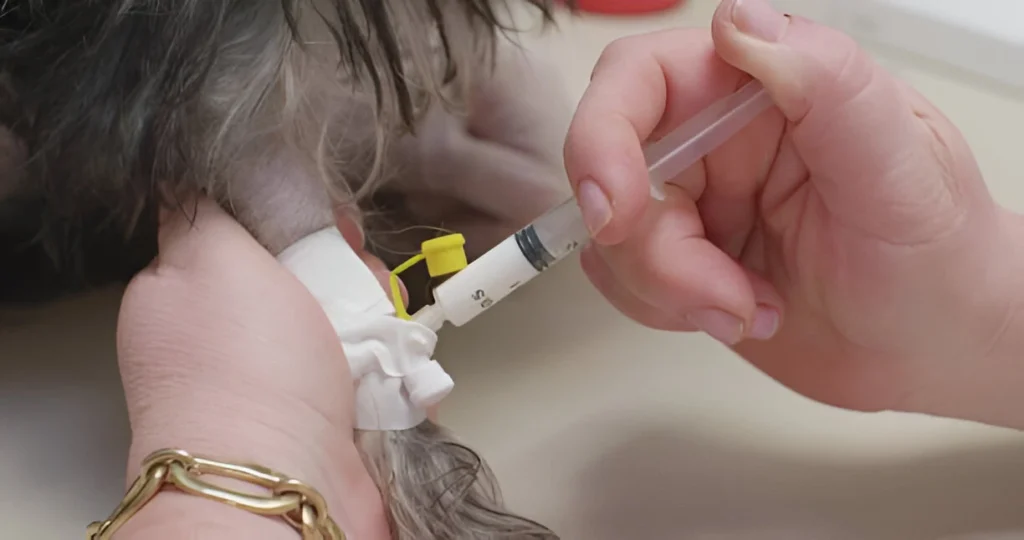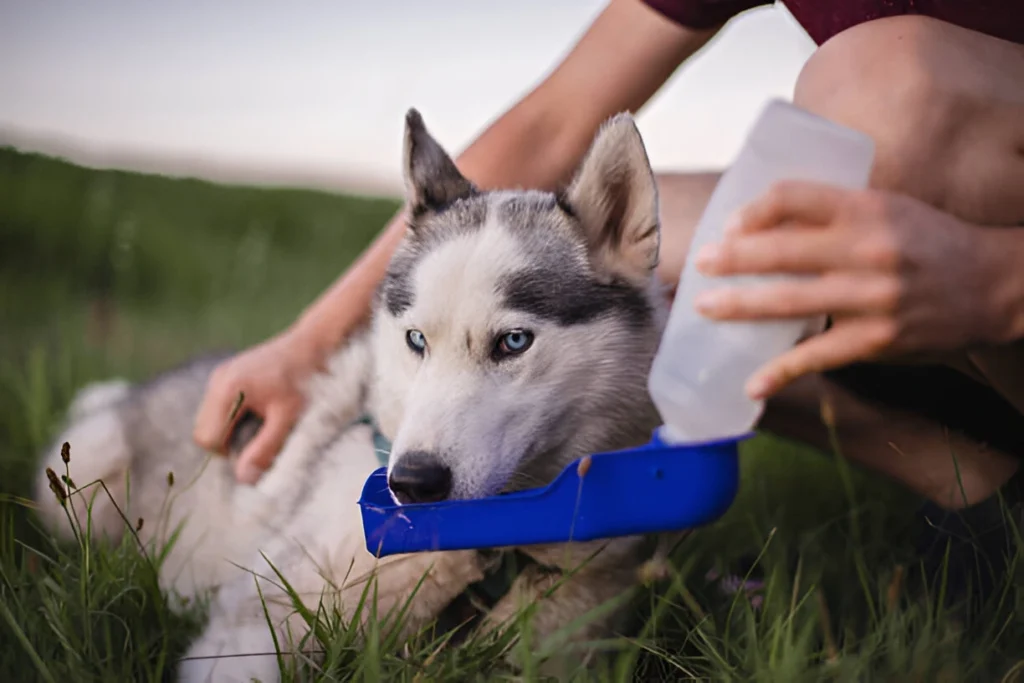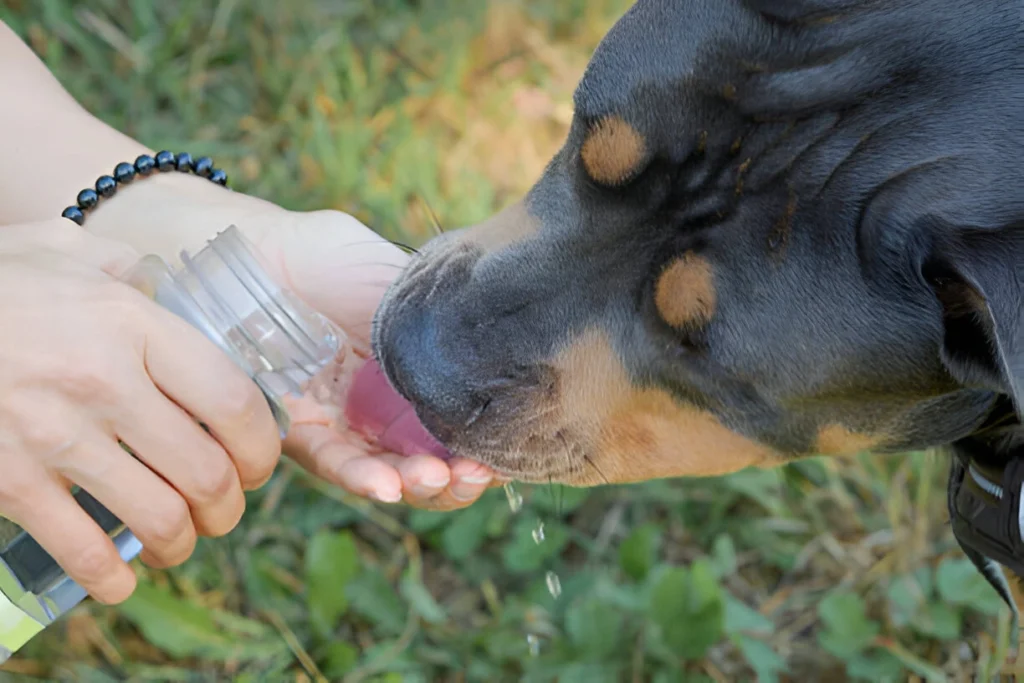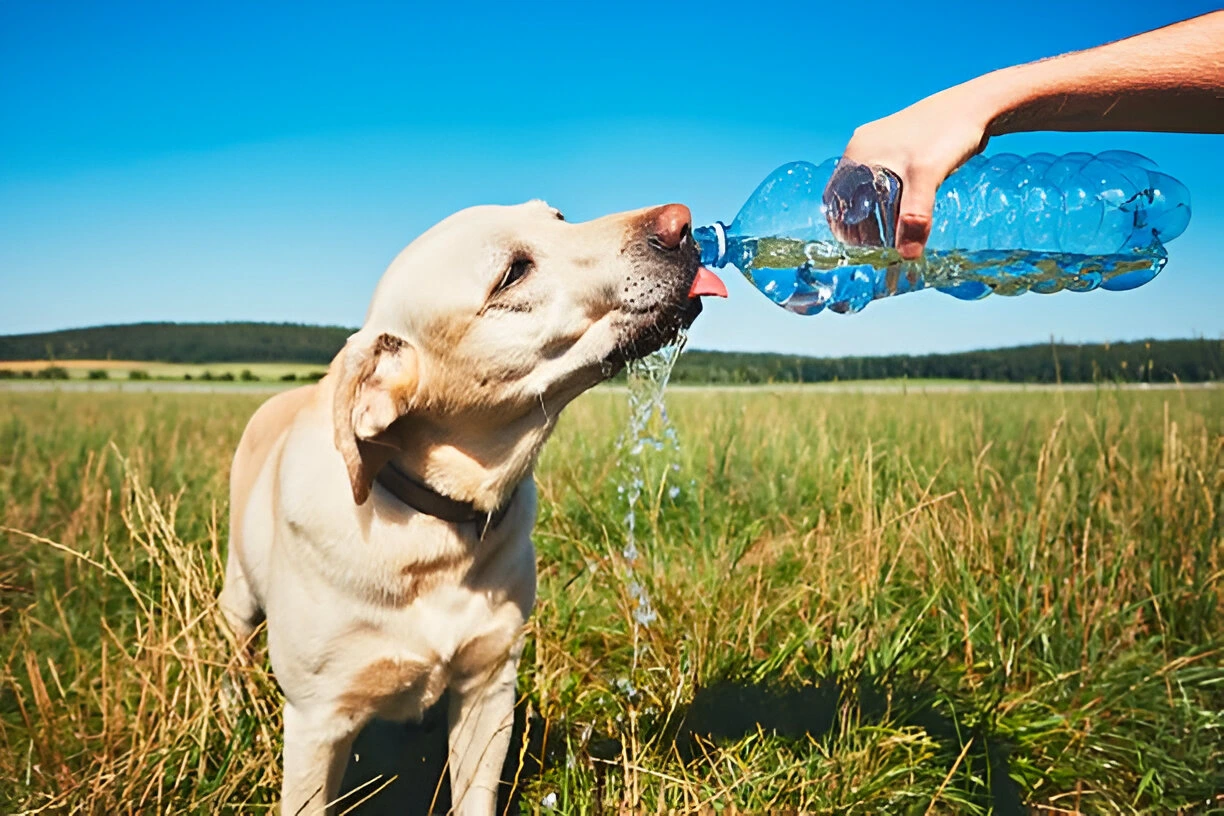Did you know that your dog can typically survive without drinking water for about 72 hours (three days)? While that’s the general guideline, most dogs will start showing signs of dehydration as early as 24 hours without water. However, this timeline isn’t set in stone. Every dog is unique, and several factors can influence how long your furry friend can go without hydration. Let’s explore these factors:
How Long Can Dogs Go Without Water
Understanding Time Limits
Dogs can survive without water for about 48 to 72 hours. However, serious signs of dehydration may appear in just 24 hours, affecting energy levels and organ function.
Factors That Influence Survival
Size, activity level, and environment play major roles in how long can dogs go without water. Active or larger dogs face faster dehydration risks, especially in hot climates. Ensuring consistent access to water is vital to prevent these dangers.
Understanding Dehydration in Dogs
Why Water is Key
Water helps with digestion, organ function, and temperature regulation. Even mild dehydration can disrupt these processes, leading to heatstroke or kidney damage.
Recognizing Early Symptoms
Dry gums, lethargy, and reduced energy are red flags. Identifying these early can make a huge difference in protecting your dog from severe consequences.

Causes of Dehydration
Environmental Factors
Hot weather or intense exercise can drain a dog’s water reserves quickly. Dogs also lose moisture by panting, making them vulnerable in warm conditions.
Health-Related Causes
Conditions like vomiting, diarrhea, kidney issues, or diabetes increase dehydration risk. Understanding these causes can help you take preventive steps and manage your pet’s health better.
Symptoms of Dehydration in Dogs
Physical Signs to Watch
Dehydration symptoms include a dry nose, sunken eyes, and thick saliva. The skin pinch test can indicate whether your dog is dehydrated.
The Dangers of Ignoring Symptoms
When dehydration isn’t addressed, it can escalate into life-threatening organ damage. Reacting quickly is critical to prevent severe health complications.

Preventing Dehydration: Practical Tips
Everyday Hydration Tips
Offer fresh, clean water daily. Use ice cubes or broths to entice picky drinkers. Always carry water when traveling with your dog.
Seasonal and Activity-Based Strategies
Adjust hydration routines in hot weather and after physical activities. Creative methods like water fountains can help keep your dog’s interest in drinking.
How Much Water Should Dogs Drink Daily?
Calculating Water Needs
Dogs generally need one ounce of water per pound of body weight each day. Puppies, older dogs, and those with health issues may need even more.
Wet Food vs. Dry Food Impact
Wet food contributes to hydration, while dry food may require increased water intake. Tailoring your dog’s diet can help meet their specific needs.
Emergency Situations: When to Seek Veterinary Care
Recognizing an Emergency
If your dog becomes extremely lethargic, won’t eat, or vomits frequently, seek veterinary care. IV fluids and medical attention can be life-saving.

First Aid for Dehydrated Dogs
Knowing when and how to act can prevent further complications. Don’t hesitate to get professional help if signs of dehydration are severe.
Long-Term Water Management Strategies
Monitoring and Tracking Hydration
Using apps or simple check-ins can ensure your dog stays hydrated. Treats and wet foods can also supplement their water intake.
Preventive Health Practices
Regular vet visits help catch underlying issues early. By keeping a close watch on your dog’s hydration, you promote a lifetime of good health.
Factors Affecting Your Dog’s Hydration Needs
1. Age Matters
- Puppies vs. Adult Dogs: Puppies, with their smaller size and lower water requirements, can usually go longer without water than adult dogs. However, it’s still crucial to ensure they stay hydrated since dehydration can quickly impact their developing bodies.
- Senior Dogs: Older dogs, especially those with health conditions like kidney disease or diabetes, are at greater risk of complications from dehydration. Their systems are often less resilient, so even short periods without water can take a toll.
2. Health Conditions
- If your dog has underlying health issues, like kidney disease, digestive problems, or diabetes, dehydration can worsen these conditions rapidly. It’s especially important to monitor water intake daily in such cases.
- Pregnant or Nursing Dogs: Expectant and nursing mothers require much more water than usual to stay hydrated and support their puppies. Dehydration in these dogs can affect both the mother’s health and her puppies.
3. The Weather Factor
- Cooler Climates: Dogs living in mild climates may be able to go a bit longer without water because their bodies aren’t losing as much fluid through panting or sweating through their paws.
- Hot or Humid Climates: Dogs in warmer regions, however, lose water more rapidly due to increased panting. If you live in a hot, dry, or humid area, it’s critical to ensure your dog has access to water at all times to prevent overheating and dehydration.
4. Breed-Specific Needs
- Thicker Coats: Breeds with thick or double coats, like Huskies or Bernese Mountain Dogs, may lose more water through panting, especially in warmer weather.
- Active or Drooly Breeds: Energetic breeds like Border Collies or Labradors burn through water reserves faster due to higher activity levels. Similarly, breeds that drool a lot, like Saint Bernards or Mastiffs, lose water continuously and require more frequent replenishment.
5. Lifestyle and Activity Levels
- Couch Potato Dogs: A dog that spends most of its day lounging around will naturally lose less water and might be able to go a little longer without drinking.
- Active Dogs: On the other hand, dogs with active lifestyles, whether they’re playing fetch, running, or exploring the outdoors, will need more water to replace what they lose during physical activities.
How to Spot Dehydration in Dogs
Even if your dog doesn’t have access to water for an extended period, keeping an eye out for early signs of dehydration is crucial. These include:
- Dry nose or gums
- Lethargy or fatigue
- Sunken eyes
- Loss of skin elasticity (test by gently pulling up their skin—if it doesn’t snap back quickly, they’re likely dehydrated).
What Should You Do?
If you notice your dog hasn’t had water in a while or is showing signs of dehydration, act fast:
- Encourage Water Intake: Offer fresh, clean water. Some dogs prefer cold water or even a bit of broth mixed in to make it more appealing.
- Hydrate with Food: Wet dog food or adding water to their dry kibble can help boost their fluid intake.
- Seek Veterinary Care: If your dog refuses water or shows severe signs of dehydration, contact your vet immediately. Severe dehydration can be life-threatening.
Takeaway
While dogs can technically survive without water for up to 72 hours, it’s never a good idea to test those limits. Dehydration can set in quickly and lead to severe health complications. Always ensure your dog has access to clean, fresh water, regardless of their age, breed, or activity level. A hydrated dog is a happy, healthy companion!
